"Model Castle"
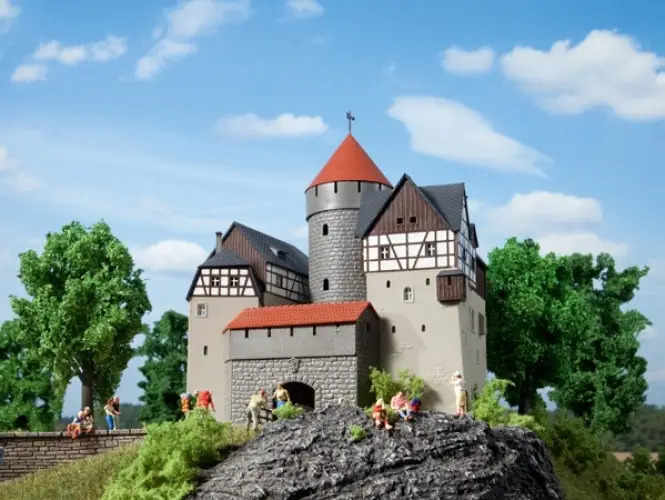
Lauterstein Castle on a model railway along with large-scale figures of people
Where the Terek rummages in the darkness,
The old tower stood
Blackening on a black rock.
"Tamara." M. Yu. Lermontov
History and castles. How many castles have been built in Europe? Their exact number is unlikely to be known to anyone, but the number of castles in Europe that have survived to this day has been more or less calculated - more than two thousand. And many castles, numbering several thousand, lie in ruins.
There was a period in history when previously built castles were destroyed to the ground, and in their place, at best, only a pile of stones remained, which local residents then took away for their own needs. They saw something symbolic in this. In France, for example, Cardinal Richelieu especially distinguished himself by destroying castles.
In addition, in the XNUMXth century, living in a castle became unfashionable, and the nobility began to move to the capitals closer to the royal court, which is why many ancient buildings were simply abandoned and turned into a source of cheap stone for local residents. And it is clear that to them, the peasants, their own stone cowshed or the fence of a garden with a vegetable garden was much more valuable than the history of their native country. Moreover, they wanted to sneeze at her, so they not only destroyed castles, but also knocked noses and hands off effigies in abbeys (and they also destroyed them!), opened crypts in the hope of getting rich, although according to the Christian faith, even the richest knights were buried in an ordinary canvas shroud. True, on the site of some ancient castles, new fortifications were built from their own material in the Renaissance style. Lucky were those castles in which prisons and barracks were organized. These existed until the time when people realized that they could make good money on ancient castles, and they began to restore them.
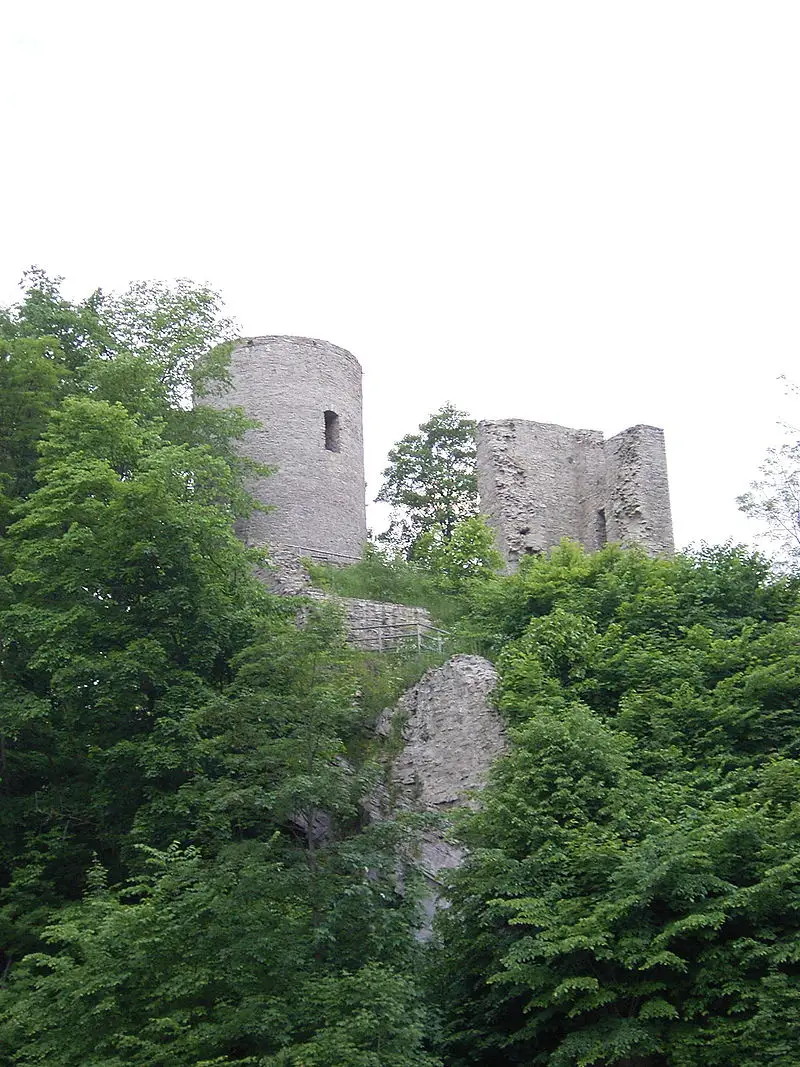
This is what the ruins of this castle look like today...
An interesting attitude towards dilapidated or even completely destroyed castles existed in the Middle Ages. There was even a proverb: “A ruined castle is a half-rebuilt castle.” And it’s clear why this was so. After all, getting stone, moving it to its place, preparing lime, gravel for heaping walls, wood for ceilings - all this cost a lot of money. And it is clear that the ruling lord, receiving this or that land from the king or as a dowry, tried in every possible way to save on construction.
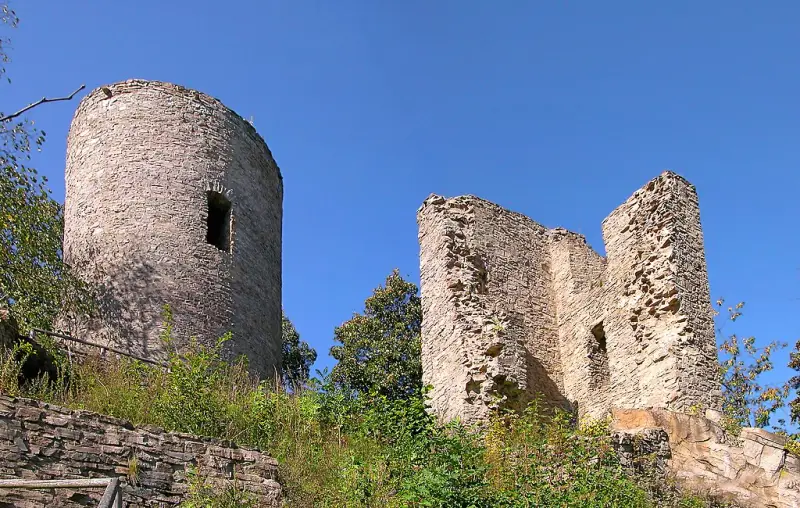
Castle ruins and... a modern house. Photo by Jörg Blobelt
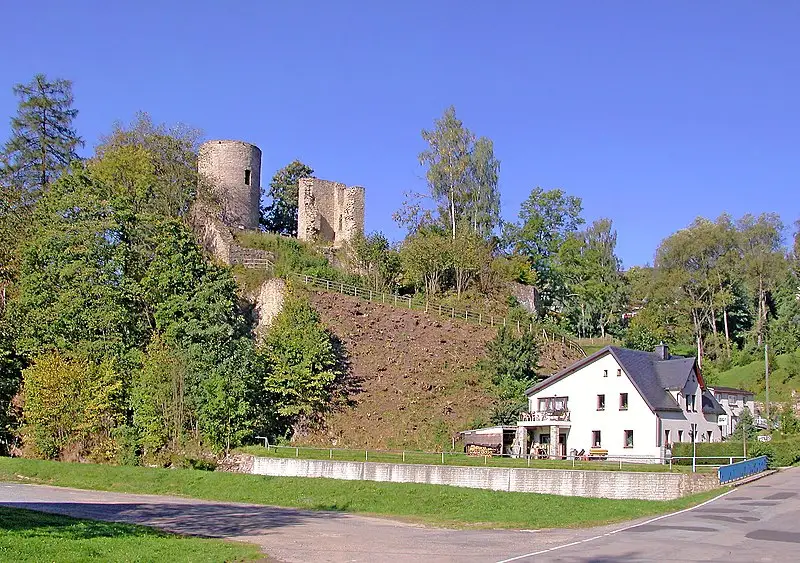
As you can see, very little remains of the castle. And this, in a certain sense, is good, since it opens up a lot of scope for the imagination of reenactors! Photo by Jörg Blobelt
For example, the royal castle of Beaumaris in Wales. It was built on bare ground for 18 months from 1278 to 1280. And 2000 workers worked on its construction every day! And according to the employment contract concluded with each worker, they were entitled to half a liter of wheat, and this amounted to 1800 hectoliters in six months! And this despite the fact that the personal royal estates produced so much grain in... a year! But it was not built alone! We know, for example, that the construction of Dover Castle cost a lot of money: 4000 pounds for the keep, 3000 for the rest of the buildings, lead water pipes, two chapels and living quarters with dressing rooms. No wonder King Henry and his son Richard the Lionheart paid for its construction for 12 years!
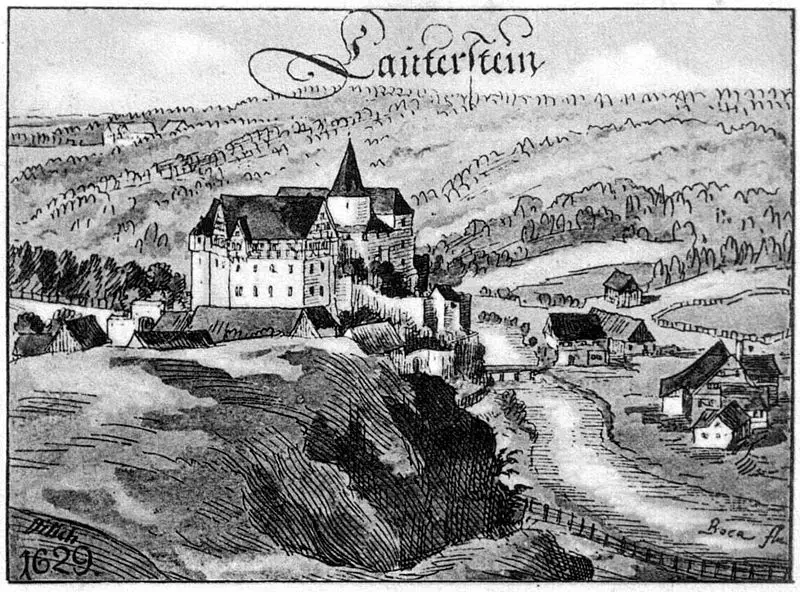
View of the castle in 1629
So it is not surprising that the ruins of the castle were considered by their new owner as a gift of fate, and he tried to put every stone to good use. Especially if it was already carved and could be used for an arch or... a latrine, because making a hole in a stone is not at all an easy task!
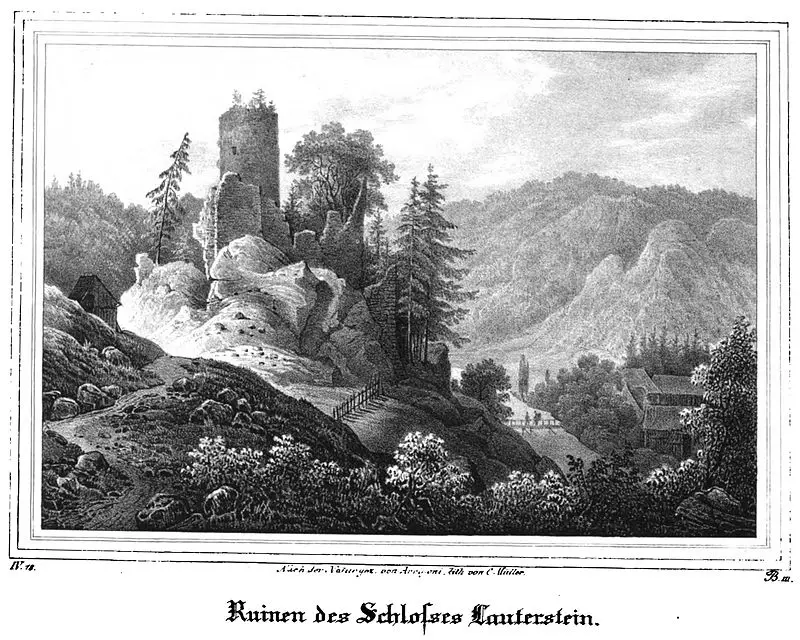
A typical picture of the Romantic era! The Lower Saxony State Museum is a local history museum of the federal state of Lower Saxony, located opposite the New Town Hall in Hannover
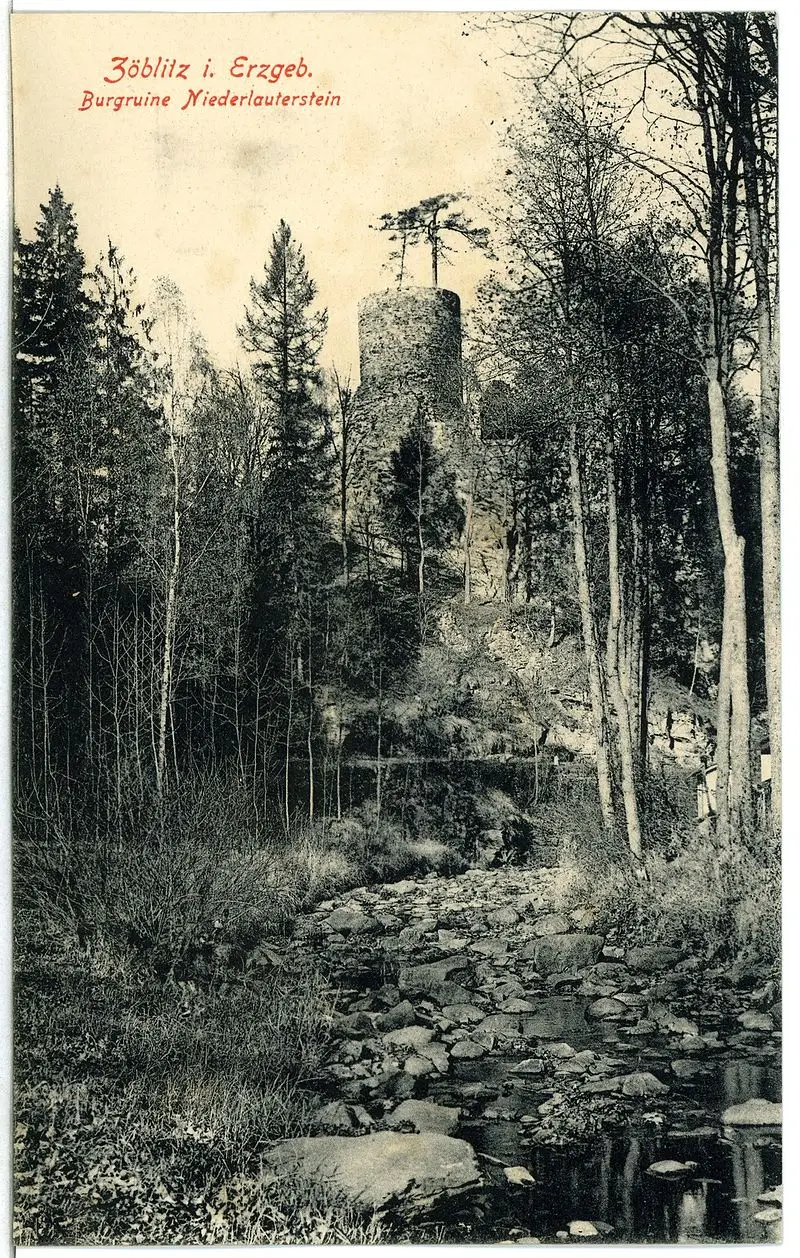
Tourist photograph of 1909
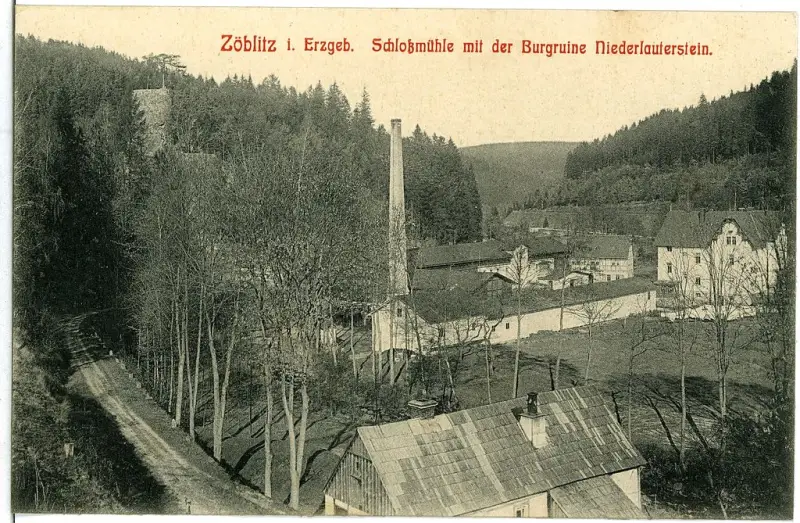
Another same photo from 1909
Well, in European and American culture of the late XNUMXth century - the first half of the XNUMXth century, the era of romanticism began, and wild nature objects, as well as ancient ruins, became the object of close attention of artists and poets, who began to unanimously sing of their “wild but pretty” beauty. Since the second half of the XNUMXth century, a number of castles have been restored, but it is clear that it makes no sense to restore them all. But this does not mean that ancient ruins do not bring any benefit today. They earn good money from them, and not only for viewing them as a tourist attraction. True, they usually don’t take money for just viewing the ruins; that would be too much. But next to them there may be a hotel, a restaurant, a souvenir shop that makes money from them. And there are also enterprising people who turn such ruins into... a castle, albeit reduced many times and for very specific purposes.
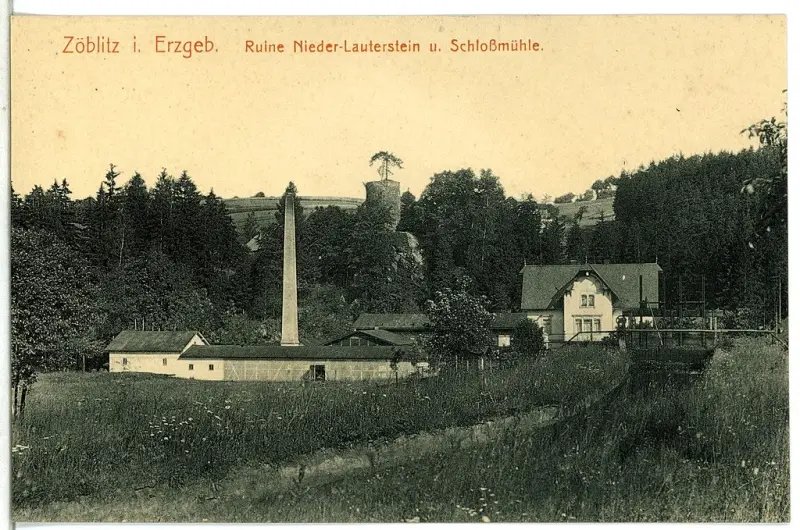
Photo with a view of the ruins of the castle from 1912
For example, Lauterstein Castle, located on a gneiss rock in the eastern part of the village of Niederlauterstein, above the left bank of the Schwarze-Pockau River, about 2 km northwest of the town of Zeblitz and 4,5 km northeast of Marienberg.
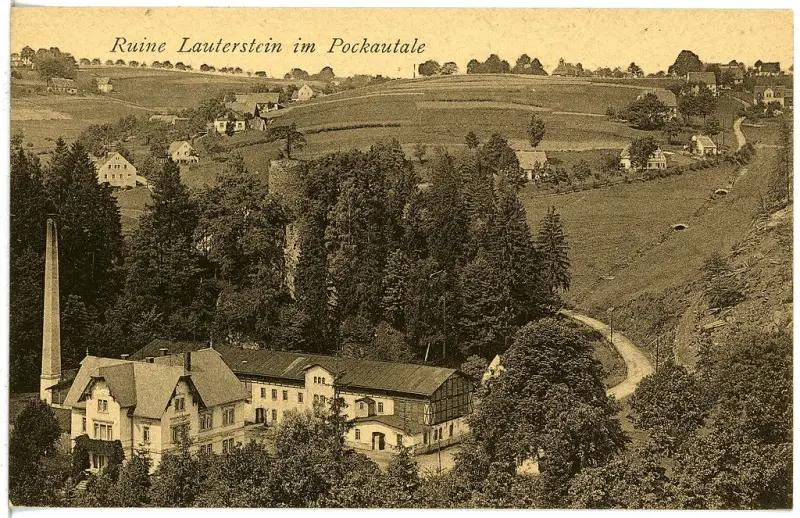
And in this photograph from 1920, the ruins of the castle are so hidden behind the trees that they are not visible!
Archaeological research in the 1970s showed that the castle was built in the second half of the 1304th century, making it very old. It was first mentioned in writing in XNUMX, when the castle was owned by a certain Johannis from the Erdmannsdorf family. The castle was built mainly from stone, hence probably the name ending in -stein (stein is German for stone). The purpose of the construction of this castle was to protect the medieval trade route between Leipzig and Prague, passing through the Ore Mountains. At that time it was a typical “knightly type” fortification - towers, walls, gates with a drawbridge. And since the castle was built on a rather high and steep rock, it was difficult to get to it.
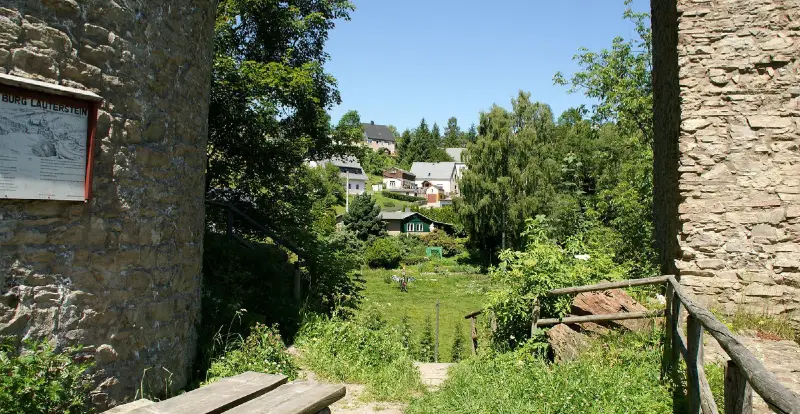
Now a picturesque village has spread around the ruins...
Then, already in the 1323th century, the Schellenberg family began to own Lauterstein. But they did not own it for long. In XNUMX, Margrave Frederick the Brave defeated the burgraves Albrecht IV von Altenburg and Otto I von Leisnig, who supported the abbey, along with Lauterstein Castle and the town of Zkobelin (Zeblitz), and they lost it.
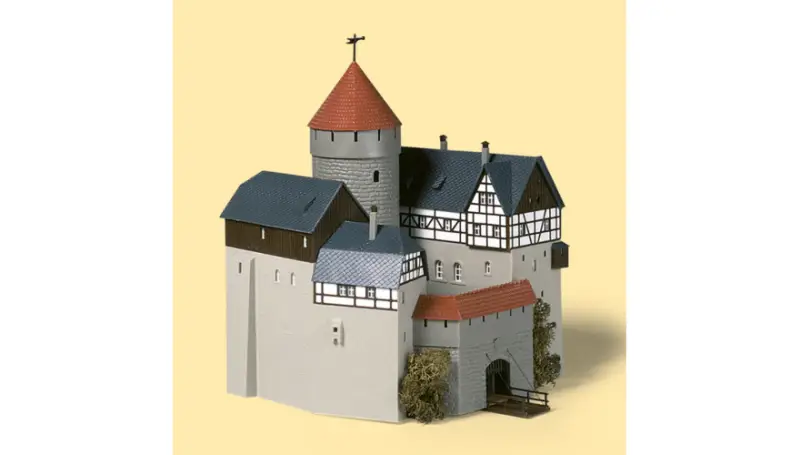
Lauterstein Castle, to the TT railway scale 1:20 (12 mm gauge). Photo by AUHAGEN
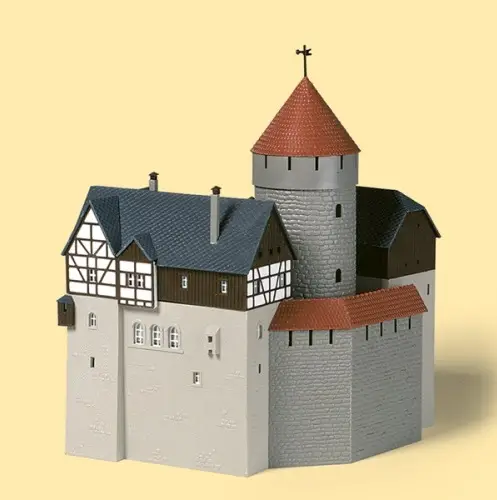
The same “house” from the opposite side. Photo by AUHAGEN
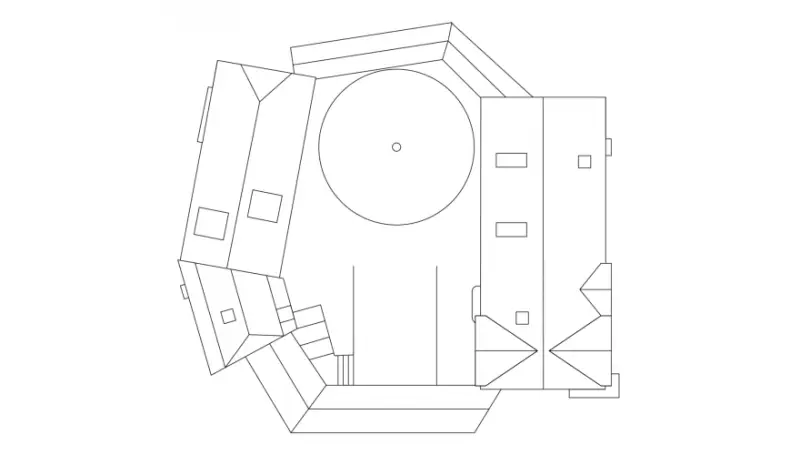
Castle plan
Then, already in 1434, Caspar von Berbisdorff of Freiberg, owner of mines and smelters in the Ore Mountains, bought it from Burgrave Otto II of Leisnig and Altenburg Lauterstein for 4000 guilders. His descendants Bastian and Melchior divided the lands and the castle in 1497 and received two possessions at once: Oberlauterstein and Niederlauterstein. In 1530, a strong fire damaged the castle, but a few years later it was restored. In 1559, Prince Augustus forced the Berbisdorf family to sell him the castle of Lauterstein for 107 guilders and appointed the Saxon Amt to manage the castle.
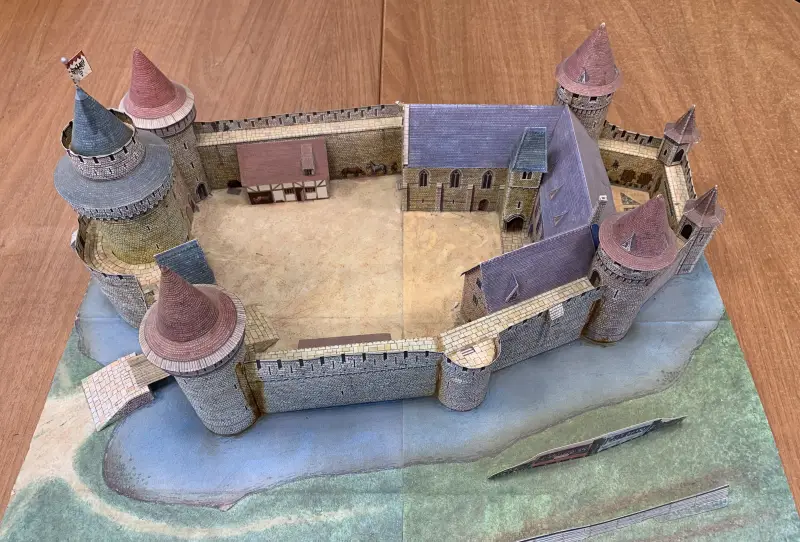
At one time, I assembled a TT scale railway for my daughter, with a map of the area and rails (I bought it in Moscow at Detsky Mir in 1978), and then for many years I bought additional locomotives, carriages and houses for her. But... I didn’t see this castle then, alas. But on the other hand, I made this castle for her out of paper and cardboard - glued together from a ready-made kit. Interestingly, it is still intact. Photo by the author
According to local tradition, on March 14, 1639, three Swedish horsemen set fire to the castle. It was not restored and has remained in ruins ever since. Lauterstein's administrative seat moved to Marienberg and then to Olbernhau and Zeblitz. It would seem that the history of the castle did not end there forever, because no one saw much sense in its restoration. But then the ruins of the castle “turned up” to the manufacturer of railway accessories from Marienberg - the Auhagen company, which began to produce a model of this castle, based on an image from 1629 on an approximate scale of 1:100.
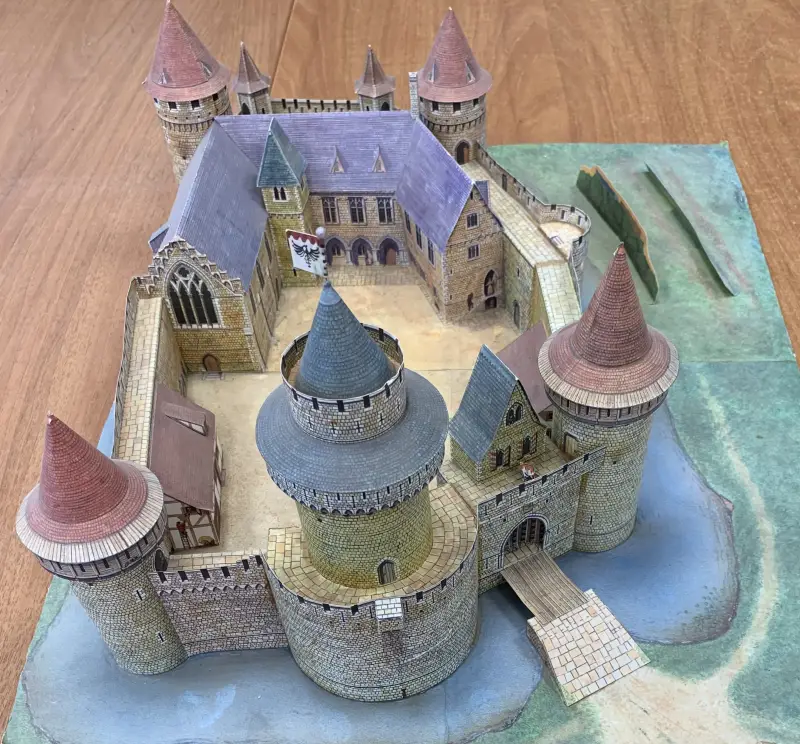
And not just intact! When she grew up, we gave it to school No. 47, and now it is actively used in history lessons. The teacher I spoke with recently while taking photographs of it told me that the children really like the design, and that some of the kids, after seeing it, are trying to make a similar castle for themselves! And here we still believe (and write about it) in the old-fashioned way that all modern children do is stare at the screen of a mobile phone. Maybe adults just indulge them in this? So that we don’t have to do anything with them ourselves, and then blame all the shortcomings of our upbringing on the school? This is what this castle, by the way, looks like from the gate. Photo by the author
Here it should be noted that toy railways are a very popular thing in the West, and there, say, in Germany, there are many companies in the model railway industry. They produce locomotives, carriages, rails, switches, “gravel” (fill the tracks!), “grass”, trees, fences, cars, models of buildings, bridges, and figures of people (including kissing couples with a “leg-up!” and even... pregnant mothers!). All this is done at three international scales: H0 (1:87), TT (1:120) and N (1:160). The pleasure of having such a road does not come cheap. In particular, in Russia, a German set of one modern locomotive and two passenger cars costs more than 25 thousand rubles! But roads and sets of houses, which (although their parts are already painted, or rather, made of colored plastic) must be glued together independently, which requires a lot of work.
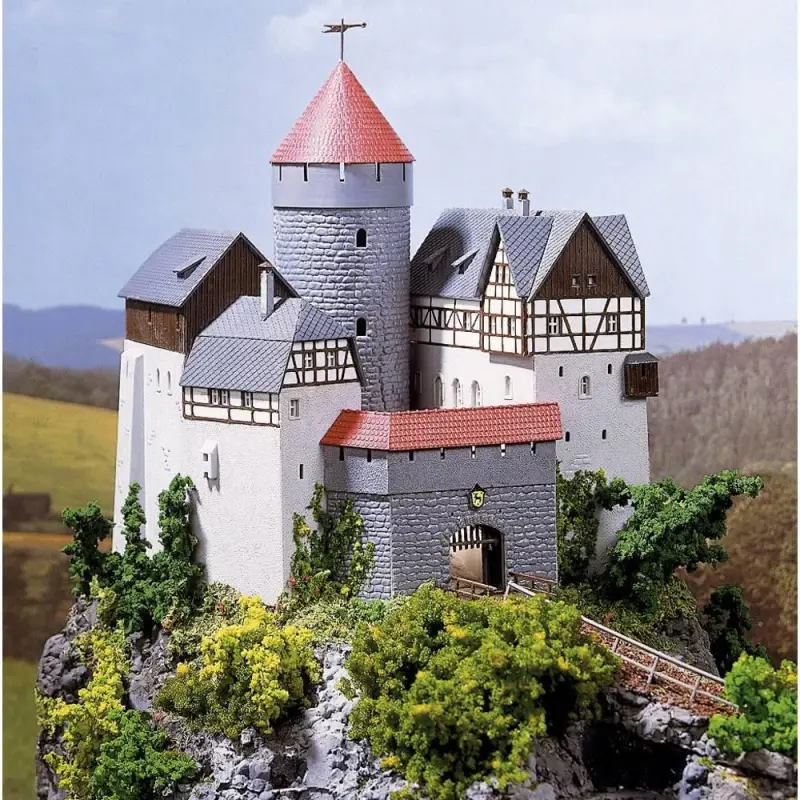
Another Lauterstein castle on the model. Photo by AUHAGEN
And it was just one of these “prefabricated houses” that Lauterstein Castle became. Moreover, the structure was developed as a background model: it was supposed to be located on the model of the railway “on the second line” and therefore can be used for all standard sizes H0, TT and N. Somewhere it will be “closer”, somewhere... “further”, but the fact that it will decorate the railway landscape is undoubtedly! This is what benefit an almost completely destroyed castle can bring!
Information